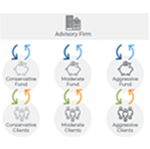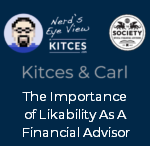Enjoy the current installment of "weekend reading for financial planners" – this week's edition kicks off with yet another round of warnings from the SEC at a recent compliance conference that they continue to scrutinize hybrid RIAs for whether they're using the appropriate (lowest-cost) share class for any mutual fund held in an advisory or wrap account for which the advisor is already receiving a separate fee (including now when it comes to 529 plans as well).
Also in the news this week were two proposed bills in Congress that would ban mandatory arbitration (not specifically targeted at financial services, but nonetheless potentially disrupting industry-standard mandatory arbitration clauses in brokerage and many advisory agreements), and a new succession planning program from Wells Fargo that could make it feasible for wirehouse brokers to get paid as much as an independent RIA does to sell their practice (but without needing to leave the wirehouse in order to do so)!
From there, we have several articles around practice management and employee development and retention, including a discussion of what it means to craft a good employee experience, how to more effectively make new employees feel included from day 1 (so they don't get disengaged as leaders/managers tend to take input more from existing employees who have existing relationships), the rise of in-house "universities" at larger advisory firms to both develop their talent and better attract next generation advisors, why even though toxic employees tend to be more productive than average their cost to the firm in the aggregate still exceeds their productivity benefits, the business impact of having stressed-out workers, and why, despite their popularity, advisory firm bonuses for business development often don't work (especially if their purpose is to get advisors not already doing much of any business development to try to start).
We wrap up with three interesting articles, all around the theme of how the industry itself is changing: the first looks at how, as the role of the financial advisor changes, so too is the requisite skill set to succeed as a financial advisor of the future; the second explores whether wirehouses can really be successful in launching their own RIA platforms to try to prevent their entrepreneurially-minded brokers from leaving to start their own independent RIAs; and the last raises the question of whether the real transformative opportunity in the industry is not to lift the fiduciary duty of loyalty (that advisors must act in their clients' best interest and mitigate conflicted compensation), but simply to lift up advisors' educational standards so it's more likely that when a consumer engaged a financial advisor, he/she really has the "substance" to deliver in-depth quality financial advice in the first place!
Enjoy the "light" reading!






 Welcome back to the 114th episode of Financial Advisor Success Podcast!
Welcome back to the 114th episode of Financial Advisor Success Podcast!


